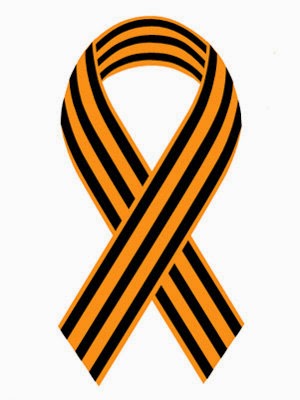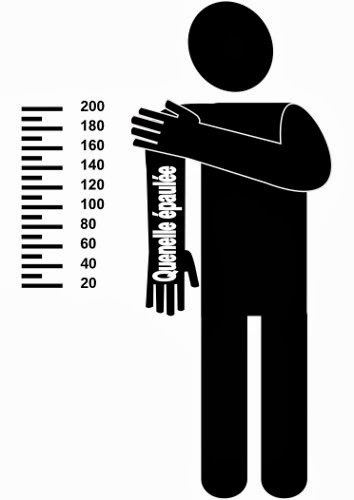Tuesday, August 12, 2008
Rapid Russian deployment shocks US (UPDATED)
Press TV reports:
The US military has been taken aback by the speed the Russian military managed to dispatch forces to South Ossetia, official says.
According to US defense sources, Russia has deployed 8,000 to 10,000 soldiers in South Ossetia. The Russian military has also flown SU-25, SU-24, SU-27 and TU-22 fighters and bombers during the campaign.
"We were tracking it earlier in that week and we knew that things were escalating," AFP quoted a military official speaking on condition of anonymity on Monday.
"I can tell you it moved quicker than we anticipated that first day," the unnamed official added.
He said the US military had not detected any obvious buildup of Russian forces along the border before the conflict suggesting Moscow had no prior intention to attack.
"Once it did happen they were able to get the forces quickly and it was just a matter of taking the roads in. So it's not as though they were building up forces on the border, waiting," the official said.
The conflict began after Georgian military forces attacked the independence-seeking province of South Osettia on Thursday Evening. Russia, in response, deployed its military forces to the region where most of the population has Russian citizenship.
Moscow, however, announced ceasefire on Tuesday in a bid to encourage Tbilisi to enter peace talks.
------
UPDATE: Just found the original AP article:
WASHINGTON (AFP)--The U.S. military was surprised by the timing and swiftness of the Russian military's move into South Ossetia and is still trying to sort out what happened, a U.S. military official said Monday.
Russian forces surged into the breakaway region last week after weeks of clashes, threats and warnings between Georgia and Russia, which culminated last Wednesday in a two-day Georgian offensive into South Ossetia.
That the two countries were on a collision course was no surprise to anyone, but the devastating Russian response was not expected, officials said.
'We were tracking it earlier in that week and we knew that things were escalating,' said a military official, who asked not to be identified. 'I can tell you it moved quicker than we anticipated that first day.'
But how it unfolded is still unclear, clouded by conflicting claims from both sides.
'I think a lot of what you're asking needs to be ironed out,' said the official.
'Some of these little issues are definitely still big questions in this event - What was the intent? Who started it? Why did they start it? And why weren't they prepared to defend what they started?'
President George W. Bush, who urged Moscow to cease fire and return to pre-Aug. 6 positions, charged in a televised statement that Russia's intention appeared to be depose Georgia's democratically elected president.
But the extent of the Russian operation remained unclear to US officials Monday.
Georgian officials said Russian troops had moved out of South Ossetia into Georgia proper, occupying the city of Gori while Georgian troops were retreating to the capital.
But U.S. defense officials said they were unable to corroborate the Georgian claims.
'We don't see anything that supports they are in Gori,' said a defense official, who spoke on condition of anonymity. 'I don't know why the Georgians are saying that.'
'That assessment is ongoing,' said Bryan Whitman, a Pentagon spokesman.
The United States has among the most powerful tools for monitoring brewing conflicts, from spy satellites to reconnaissance aircraft and drones capable of scooping up radio signals or capture real-time images of forces on the ground.
But the extent to which they were trained on this remote conflict before it turned violent is not known.
The Russians, however, warned on Aug. 3 of a growing threat of 'large-scale military conflict' between Georgia and South Ossetia.
The State Department issued a mild statement on Aug. 5 urging Moscow to refrain from provocative actions, but gave no hint that it was aware that military action either by Georgia or Russia was in the offing.
Officials have suggested the fighting was not seen as an immediate threat, in part because there were only about 95 U.S. troops and 35 civilian contractors in the country training Georgian troops for Iraq. And they were not near South Ossetia.
About 1,650 US troops conducted a joint exercise with the Georgian military in mid-July. But they were out of the country when the hostilities flared.
At around the same time, the Russian military deployed 8,000 troops to the North Caucases for counter-terrorism exercises that Moscow said were unrelated to the tensions with its southern neighbor.
The U.S. defense official said about 8,000 to 10,000 Russian troops have moved into South Ossetia. They also have flown SU-25, SU-24, SU-27 and TU-22 fighters and bombers during the campaign.
But the official said there was no obvious buildup of Russian forces along the border that signaled an intention to invade.
'Once it did happen they were able to get the forces quickly and it was just a matter of taking the roads in. So it's not as though they were building up forces on the border, waiting,' the official said.
'What are their future intentions, I don't know. Obviously they could throw more troops at this if they wanted to,' he said.
The US military has been taken aback by the speed the Russian military managed to dispatch forces to South Ossetia, official says.
According to US defense sources, Russia has deployed 8,000 to 10,000 soldiers in South Ossetia. The Russian military has also flown SU-25, SU-24, SU-27 and TU-22 fighters and bombers during the campaign.
"We were tracking it earlier in that week and we knew that things were escalating," AFP quoted a military official speaking on condition of anonymity on Monday.
"I can tell you it moved quicker than we anticipated that first day," the unnamed official added.
He said the US military had not detected any obvious buildup of Russian forces along the border before the conflict suggesting Moscow had no prior intention to attack.
"Once it did happen they were able to get the forces quickly and it was just a matter of taking the roads in. So it's not as though they were building up forces on the border, waiting," the official said.
The conflict began after Georgian military forces attacked the independence-seeking province of South Osettia on Thursday Evening. Russia, in response, deployed its military forces to the region where most of the population has Russian citizenship.
Moscow, however, announced ceasefire on Tuesday in a bid to encourage Tbilisi to enter peace talks.
------
UPDATE: Just found the original AP article:
WASHINGTON (AFP)--The U.S. military was surprised by the timing and swiftness of the Russian military's move into South Ossetia and is still trying to sort out what happened, a U.S. military official said Monday.
Russian forces surged into the breakaway region last week after weeks of clashes, threats and warnings between Georgia and Russia, which culminated last Wednesday in a two-day Georgian offensive into South Ossetia.
That the two countries were on a collision course was no surprise to anyone, but the devastating Russian response was not expected, officials said.
'We were tracking it earlier in that week and we knew that things were escalating,' said a military official, who asked not to be identified. 'I can tell you it moved quicker than we anticipated that first day.'
But how it unfolded is still unclear, clouded by conflicting claims from both sides.
'I think a lot of what you're asking needs to be ironed out,' said the official.
'Some of these little issues are definitely still big questions in this event - What was the intent? Who started it? Why did they start it? And why weren't they prepared to defend what they started?'
President George W. Bush, who urged Moscow to cease fire and return to pre-Aug. 6 positions, charged in a televised statement that Russia's intention appeared to be depose Georgia's democratically elected president.
But the extent of the Russian operation remained unclear to US officials Monday.
Georgian officials said Russian troops had moved out of South Ossetia into Georgia proper, occupying the city of Gori while Georgian troops were retreating to the capital.
But U.S. defense officials said they were unable to corroborate the Georgian claims.
'We don't see anything that supports they are in Gori,' said a defense official, who spoke on condition of anonymity. 'I don't know why the Georgians are saying that.'
'That assessment is ongoing,' said Bryan Whitman, a Pentagon spokesman.
The United States has among the most powerful tools for monitoring brewing conflicts, from spy satellites to reconnaissance aircraft and drones capable of scooping up radio signals or capture real-time images of forces on the ground.
But the extent to which they were trained on this remote conflict before it turned violent is not known.
The Russians, however, warned on Aug. 3 of a growing threat of 'large-scale military conflict' between Georgia and South Ossetia.
The State Department issued a mild statement on Aug. 5 urging Moscow to refrain from provocative actions, but gave no hint that it was aware that military action either by Georgia or Russia was in the offing.
Officials have suggested the fighting was not seen as an immediate threat, in part because there were only about 95 U.S. troops and 35 civilian contractors in the country training Georgian troops for Iraq. And they were not near South Ossetia.
About 1,650 US troops conducted a joint exercise with the Georgian military in mid-July. But they were out of the country when the hostilities flared.
At around the same time, the Russian military deployed 8,000 troops to the North Caucases for counter-terrorism exercises that Moscow said were unrelated to the tensions with its southern neighbor.
The U.S. defense official said about 8,000 to 10,000 Russian troops have moved into South Ossetia. They also have flown SU-25, SU-24, SU-27 and TU-22 fighters and bombers during the campaign.
But the official said there was no obvious buildup of Russian forces along the border that signaled an intention to invade.
'Once it did happen they were able to get the forces quickly and it was just a matter of taking the roads in. So it's not as though they were building up forces on the border, waiting,' the official said.
'What are their future intentions, I don't know. Obviously they could throw more troops at this if they wanted to,' he said.





